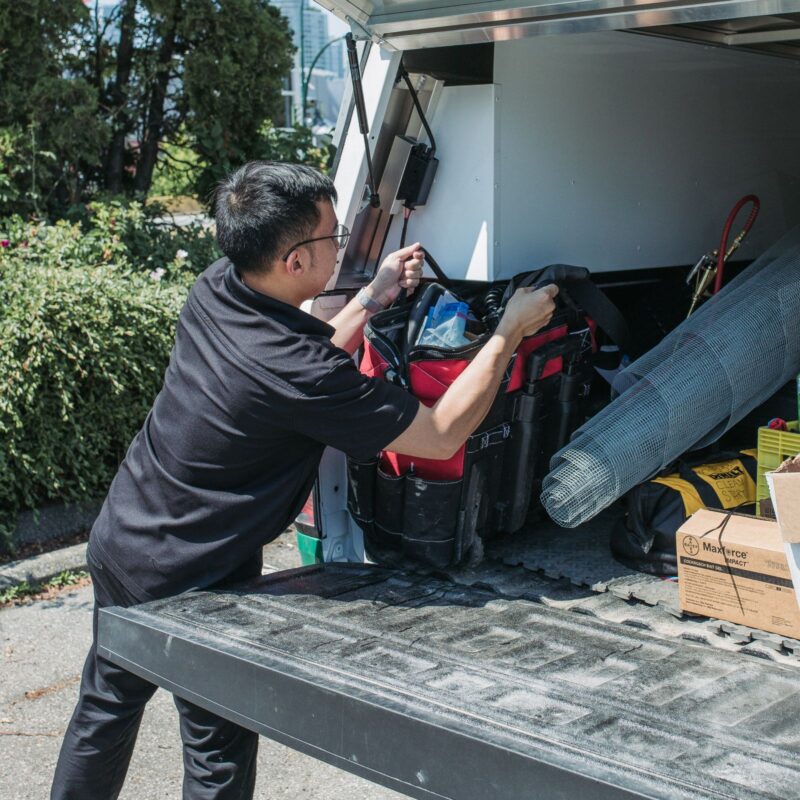Bed Bugs 101

Our friends at PestWorld.org wrote an awesome article on Beg Bugs 101, you can find the full article HERE.
Bed bugs are small, brownish insects that likely get their name from their habit of taking refuge in beds and feeding on humans while asleep. Bed bugs are skillful “hitchhikers,” readily latching onto suitcases, clothes, or anything else they can find, and ending up wherever these items land. Their hitchhiking techniques allow infestations to spread rapidly.
Where Are Bed Bugs Found?
Bed bugs are found in nearly every place people gather, including residences, hotels, schools, offices, retail stores and even public transportation.
What Do Bed Bugs Look Like?
Bed bugs are brown, flat and oval-shaped insects with six legs and two antennae. They grow to about 3/16th of an inch in length and 1/8th of an inch wide. They will become redder in color, swollen, and elongated after feeding.

Can Bed Bugs Fly?
Although these insects have reduced “wing pads,” bed bugs do not have wings and cannot fly.
What Do Bed Bugs Eat?
Bed bugs only eat blood. Bed bugs do need to eat regular meals to survive and develop; however, it is possible for adult bed bugs to go several months without eating a blood meal. These insects dine on many warm-blooded animals, but they primarily feed on humans, latching onto any exposed skin. Bed bugs typically require 5-10 minutes to engorge with blood. After feeding, they move to secluded places to digest their meal, mate and lay eggs.
Are Bed Bugs Nocturnal?
Bed bugs are often described as nocturnal creatures because they typically come out at night to eat, though they can sometimes take a blood meal during the day. They come out at night as they are drawn to the warm, steady stream of carbon dioxide a person emits while they sleep.
Where Do Bed Bugs Hide?
As their name suggests, bed bugs often hide in the bedroom. They also hide in:
- Cracks and crevices in walls or wood
- Armchairs and couches
- Behind baseboards
- Around mattress buttons
- Within bedding
- Inside box springs.
- Stuffed animals
- Suitcases
- Upholstery of bus seats
- Backpacks
- Clothing
- Seams and pockets of purses
- Fluorescent light bulbs
- Seats, carpet and vents on airplanes
- Inside electrical switch plates
- Picture frames
- Wallpaper
Are Bed Bugs Dangerous?
Bed bugs are less dangerous than they are a nuisance. Bed bug bites are virtually painless and do not transmit diseases. However, most people develop an allergic reaction to the saliva transmitted during bites, causing red, itchy welts that can often be relieved with topical steroid creams. After periods of extended exposure, it is possible for humans to reach a point where they no longer have a reaction to bed bug bites, or those reactions may become more severe.
How Can I Prevent a Bed Bug Infestation?
Be proactive. If you’re about to take a trip, read up on how to prevent bed bugs to avoid bringing this pest home.
Ways to Prevent Bed Bugs At Your Travel Destination:
- Thoroughly inspect the entire room before unpacking, including behind the headboard, under lights and inside dressers, drawers, sofas and chairs.
- Pull back the sheets and inspect the mattress seams and box springs, particularly at the corners, for pepper-like stains, spots or shed bed bug skins.
- Place suitcases in a plastic trash bag during the entirety of your trip to ensure that bed bugs cannot take up residence there prior to departure.
- Do not place luggage on upholstered surfaces. The safest place is in the bathroom in the middle of a tile floor or on a luggage rack after it has been thoroughly inspected. Do not use a luggage rack if it has hollow legs, where bed bugs may hide unseen.
- If you suspect your room is infested, notify management and request to change rooms immediately. Be sure to avoid rooms next to and above/below the suspected infestation, as bed bugs can easily move and spread via housekeeping carts, luggage and even through wall sockets.
Ways to Prevent Bed Bugs at Home:
- Inspect your suitcases and bags outdoors before bringing them into the house.
- Vacuum your suitcase thoroughly before storing it. Also using a garment hand steamer on your luggage is preferable because it can kill any bed bugs or eggs that may have traveled home with you.
- Wash and dry all your clothes – even those that have not been worn – on hot cycles.
- Keep clothes that go to the dry cleaner in a sealed plastic bag until they can be transported.
For additional tips and information on avoiding bed bugs while shopping, traveling, at college, at summer camp, and so on, read our article Bed Bug Prevention.
How Do I Get Rid of Bed Bugs?
Once bed bugs enter a household, they’ll quickly make themselves at home and are extremely difficult to get rid of, so don’t waste time. If you are worried you may have brought bed bugs home, contact a qualified pest control professional to do an inspection and identify the problem. They are expertly trained in bed bug control and have the best experience in eliminating this resilient pest. A pest control professional, also known as a bed bug exterminator, can clearly explain how to get rid of bed bugs in your home. Contact us today for Pest Control.


